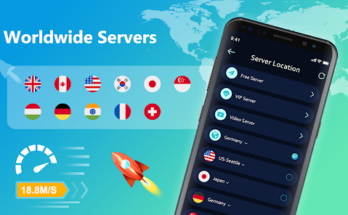The demand for video content is rapidly increasing, with audiences spanning the globe. To reach a wider audience, video creators often need to translate and dub their content into multiple languages. Traditional dubbing processes are time-consuming and expensive, but advancements in artificial intelligence (AI) have revolutionized this space. AI-powered video dubbing tools offer a more efficient and cost-effective solution for changing the language of video content. This article explores what video language change AI video dubbing is, how it works, its features, pros and cons, alternatives, and provides a conclusion and verdict on its effectiveness.
What is Video Language Change AI Video Dubbing?
Video language change AI video dubbing refers to the use of artificial intelligence to automatically translate and dub video content from one language to another. These AI systems leverage advanced machine learning algorithms, natural language processing (NLP), and deep learning to produce high-quality dubbed audio that matches the original video’s timing and context. AI video dubbing tools are used in various industries, including entertainment, education, marketing, and more, to make video content accessible to a global audience.

How Video Language Change AI Video Dubbing Works
1. Speech Recognition
- The AI system first transcribes the original audio of the video using speech recognition technology. This step involves converting spoken language into text with high accuracy.
2. Translation
- The transcribed text is then translated into the target language using machine translation algorithms. These algorithms are trained on vast datasets of multilingual text to ensure accurate and contextually appropriate translations.
3. Voice Synthesis
- After translation, the text is converted back into speech using text-to-speech (TTS) technology. AI voice synthesis models are capable of producing natural-sounding speech that matches the tone, pitch, and cadence of the original audio.
4. Lip Syncing
- To ensure that the dubbed audio aligns with the lip movements of the speakers in the video, the AI system employs lip-syncing algorithms. These algorithms adjust the timing of the synthesized speech to match the visual cues in the video.
5. Audio Integration
- The final step involves integrating the synthesized and lip-synced audio back into the video. The AI ensures that the new audio track blends seamlessly with the original video, maintaining audio quality and synchronization.
6. Quality Assurance
- AI video dubbing systems often include quality assurance steps to review and refine the output. This may involve human oversight to catch any errors or discrepancies that the AI might have missed.
Features of Video Language Change AI Video Dubbing
1. Multi-Language Support
- Supports a wide range of languages for translation and dubbing.
2. High Accuracy
- Utilizes advanced NLP and machine learning algorithms to ensure accurate translations.
3. Natural-Sounding Voices
- Produces high-quality, natural-sounding speech using state-of-the-art TTS technology.
4. Contextual Understanding
- AI systems understand the context of the dialogue, ensuring translations are contextually appropriate.
5. Lip Syncing
- Ensures dubbed audio matches the lip movements of the speakers in the video.
6. Fast Processing
- Significantly reduces the time required for dubbing compared to traditional methods.
7. Scalability
- Easily scales to handle large volumes of video content.
8. Cost-Effective
- Reduces the cost of dubbing by automating the process.
9. User-Friendly Interface
- Provides an easy-to-use interface for uploading videos and managing the dubbing process.
10. Customization
- Allows customization of voice characteristics to match the original speakers.
11. Integration Capabilities
- Can be integrated with various video editing and production tools.
12. Real-Time Dubbing
- Some advanced systems offer real-time dubbing capabilities.
13. Quality Control
- Includes features for reviewing and editing the dubbed content to ensure high quality.
Pros of Video Language Change AI Video Dubbing
| Pros | Description |
|---|---|
| Efficiency | AI dubbing significantly speeds up the dubbing process compared to traditional methods. |
| Cost-Effective | Reduces the cost of hiring voice actors and studio time. |
| Scalability | Easily handles large volumes of content, making it suitable for big projects. |
| Consistency | Ensures consistent quality and voice across multiple videos. |
| Natural Sounding | Produces high-quality, natural-sounding voices that closely match the original audio. |
| Real-Time Capabilities | Some systems offer real-time dubbing, which is useful for live events and broadcasts. |
| Customization | Allows customization of voices to match the original speakers’ tone and style. |
| Contextual Accuracy | AI systems understand the context of the dialogue, ensuring more accurate translations. |
| Multi-Language Support | Supports a wide range of languages, making content accessible to a global audience. |
| Integration | Can be integrated with existing video production workflows and tools. |
Cons of Video Language Change AI Video Dubbing
| Cons | Description |
|---|---|
| Initial Setup Costs | May require significant investment in AI technology and infrastructure. |
| Quality Variability | While generally high, the quality of AI dubbing can vary depending on the complexity of the content. |
| Limited Emotional Nuance | AI-generated voices may lack the emotional depth and nuance of human voice actors. |
| Language Limitations | May not support all languages or dialects, limiting its applicability in some regions. |
| Dependency on Technology | Relies heavily on the quality and reliability of the AI technology being used. |
| Ethical Concerns | Potential ethical issues related to the replacement of human voice actors with AI. |
| Accuracy Issues | AI translations may still have errors or misinterpretations, requiring human oversight. |
| Privacy Concerns | Handling of sensitive content through AI systems may raise privacy and security concerns. |
| Integration Complexity | Integrating AI dubbing with existing workflows and tools can be complex and time-consuming. |
| Customization Limits | While customizable, AI voices may still fall short of perfectly matching the original speaker’s unique style. |
Video Language Change AI Video Dubbing Alternatives
| Alternative | Description | Platform | Pricing |
|---|---|---|---|
| Human Voice Actors | Traditional method of dubbing using professional voice actors. | All | Varies by project |
| Subtitling | Adding translated text subtitles to the video instead of dubbing. | All | Lower cost compared to dubbing |
| Overdubbing | Simplified dubbing method where the original audio is mixed with a translated voiceover. | All | Medium cost |
| Automated Transcription and Translation | Software that automatically transcribes and translates audio, but requires manual voiceover. | Windows, macOS | Free, Paid Options |
| Google Translate | AI-powered translation service that can be used for creating scripts for dubbing. | Web, Mobile | Free, Paid Options |
| Amazon Polly | Text-to-speech service that can be used to create dubbed audio tracks. | Cloud | Pay-as-you-go |
| IBM Watson Text to Speech | AI-powered TTS service for generating dubbed audio. | Cloud | Pay-as-you-go |
| DeepL Translator | High-accuracy machine translation service for creating dubbing scripts. | Web | Free, Paid Options |
| Sonix | AI transcription and translation service that can be used in dubbing workflows. | Web | Paid |
| Rev | Transcription and translation service that includes options for human and automated processing. | Web | Paid |
Conclusion and Verdict Video Language Change AI Video Dubbing
AI video dubbing represents a significant advancement in making video content accessible to a global audience. By leveraging advanced AI technologies, it offers a faster, more cost-effective, and scalable solution compared to traditional dubbing methods. While there are some limitations, such as the potential for quality variability and ethical concerns, the overall benefits make it a compelling option for many content creators and organizations.
AI video dubbing tools are especially valuable for large-scale projects, educational content, marketing videos, and other scenarios where quick turnaround and consistency are crucial. However, it’s important to weigh the pros and cons and consider the specific needs of your project when choosing between AI dubbing and traditional methods.
FAQs Video Language Change AI Video Dubbing
1. Can AI dubbing replace human voice actors entirely?
- While AI dubbing can handle many tasks efficiently, it may not entirely replace human voice actors, especially for content requiring emotional nuance and depth.
2. How accurate is AI video dubbing?
- AI video dubbing is generally highly accurate, but the quality can vary depending on the complexity of the content and the AI system used.
3. Is AI video dubbing cost-effective?
- Yes, AI video dubbing is typically more cost-effective than traditional dubbing methods, especially for large volumes of content.



